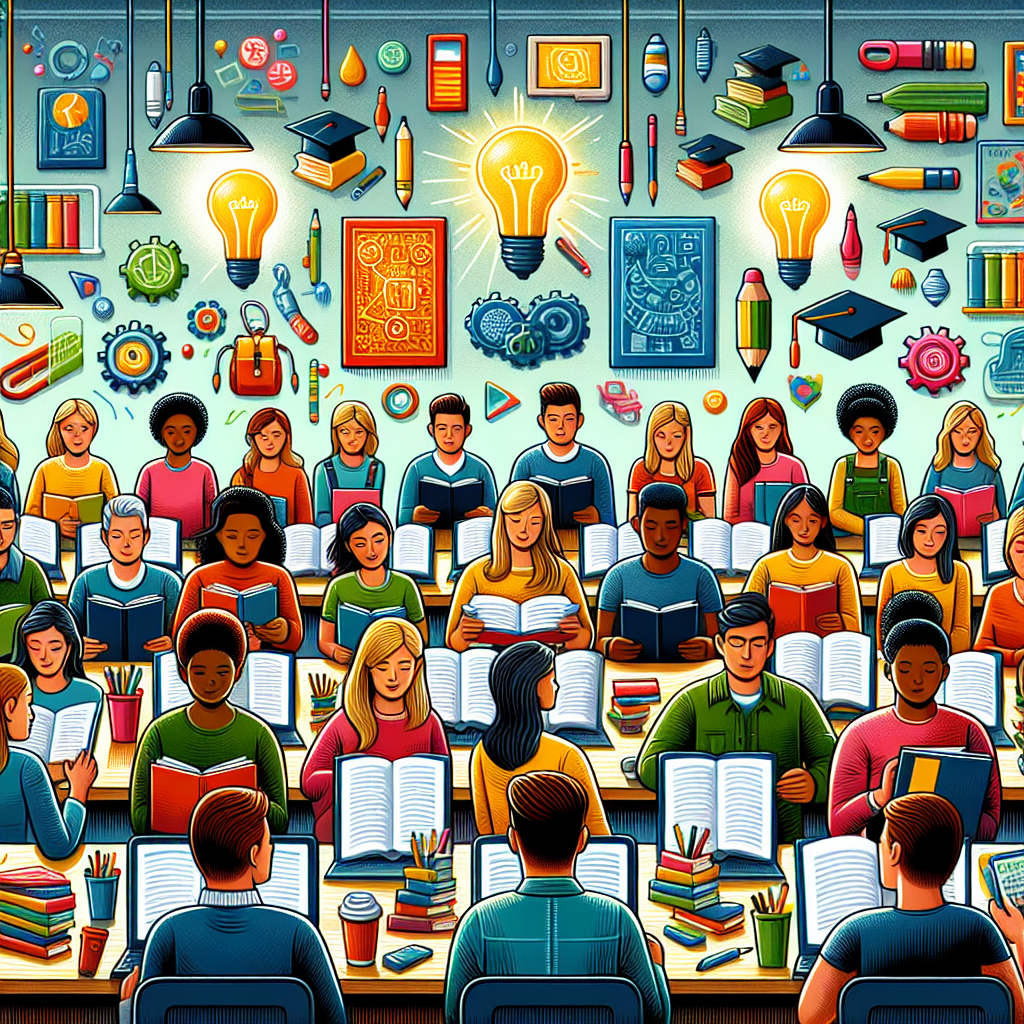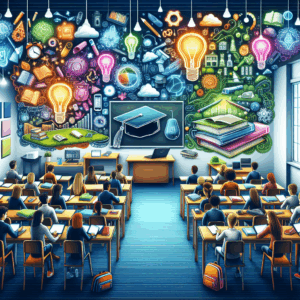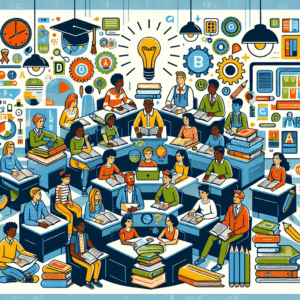Leseforståelsesprøve med moderne litteraturtekster
Leseforståelsesprøven med moderne litteraturtekster er et viktig verktøy for å vurdere elevers evne til å forstå og tolke litterære verk. Denne prøven fokuserer på moderne tekster som er relevante for dagens samfunn og kultur. Gjennom å analysere språklige virkemidler, temaer og karakterutvikling, får elevene muligheten til å utvikle dypere forståelse for litteraturen. Prøven består av fem spørsmål som varierer i type og vanskelighetsgrad, designet for å utfordre mellomliggende lærere. Dette gir et godt grunnlag for å forbedre leseforståelsen.
Moderne litteratur og dens betydning
Moderne litteratur er ofte speilbilder av samfunnets endringer og utfordringer. Gjennom å studere moderne tekster, kan elever lære om kulturelle og sosiale kontekster som former forfatterens perspektiv. Dette bidrar til en bedre forståelse av hvordan litteratur kan brukes til å utforske komplekse temaer som identitet, makt og motstand. Ved å inkludere samtidsforfattere, oppfordres elevene til å relatere tekstene til egne erfaringer og følelser. Dette gjør læringsopplevelsen mer engasjerende og relevant.
Testens struktur og spørsmålstyper
Prøven er delt opp i fem spørsmål som dekker ulike aspekter av leseforståelse. Dette inkluderer spørsmål om ordforråd, tekstforståelse og analyse av litterære elementer. Hver spørsmålstype utfordrer elevene til å bruke kritisk tenkning og analytiske ferdigheter. Det er viktig at elevene leser tekstene nøye og reflekterer over innholdet før de svarer. Gjennom denne strukturen kan lærerne identifisere hvilke områder som trenger mer fokus i undervisningen.
Læringsutbytte og motivasjon
Gjennom å ta del i leseforståelsesprøven, får elevene muligheten til å utvikle viktige ferdigheter som vil være nyttige i videre studier og i livet generelt. Litteratur åpner døren til nye perspektiver og tanker, som fremmer empati og forståelse for andre. Ved å mestre leseforståelse, vil elevene også forbedre sine skriveferdigheter og evnen til å uttrykke seg klart. Denne prøven oppfordrer til livslang læring og gir en solid plattform for videre akademisk utvikling.
Denne quizen er designet for å teste og forbedre leseferdighetene dine i moderne litteratur. Den består av 10 spørsmål som dekker ulike aspekter av leseforståelse, herunder ordforråd, grammatikk, og tekstforståelse. Spørsmålene er laget for å utfordre mellomliggende lærere og gi en dypere innsikt i litterære verk og forfatternes intensjoner. Gjennom å analysere karakterer, temaer og språklige elementer, vil du få muligheten til å forbedre dine analytiske ferdigheter. Hver oppgave inneholder fire svaralternativer, hvorav kun ett er korrekt. Det er viktig å lese hver tekst nøye og reflektere over innholdet før du velger svar. Denne tilnærmingen vil ikke bare hjelpe deg med å forberede deg til eksamener, men også øke din generelle forståelse av litteratur og dens nyanser. Quizen kan brukes i klasserommet, som en del av selvstudium, eller som en introduksjon til moderne litteratur. Vi oppfordrer deg til å ta deg tid til å vurdere hvert spørsmål nøye og bruke ferdighetene dine til å finne de mest passende svarene. Gjennom å gjøre dette, vil du ikke bare forbedre lesekompetansen din, men også utvikle en dypere forståelse av de komplekse temaene som moderne litteratur ofte tar opp. Lykke til med quizen og nyt prosessen med å lære mer om litteraturens verden.
🎯 Læringsmål
Test kunnskapen og ferdighetene dine i Leseforståelsesprøve med moderne litteraturtekster, identifiser områder der du trenger å forbedre deg, og støtt læringsprosessen din. Med denne testen kan du måle kompetansen din i leseforståelsesprøve med moderne litteraturtekster og identifisere utviklingsområdene dine.
📚 Forutsetninger
Det anbefales at du har grunnleggende kunnskap om Leseforståelsesprøve med moderne litteraturtekster. Å kjenne til konsepter på nybegynnernivå vil hjelpe deg å få bedre resultater fra denne testen.
ℹ️ Testdetaljer
👥 Målgruppe
Mellomstudenter med grunnleggende kunnskap om leseforståelsesprøve med moderne litteraturtekster
Quiz Fullført!
Din Poengsum
0 / 28
Detaljerte Resultater
Tenk på hva teksten handler om og hvilke utfordringer karakterene møter.
Vurder hvordan forfatteren leker med fortellingens struktur og virkelighet.
Reflekter over hvilke erfaringer Jude har hatt og hvordan de former ham.
Tenk på hvordan omgivelsene påvirker karakterene og deres valg.
Vurder hvordan fortelleren vet mer enn karakterene i historien.
Imagery helps readers visualize scenes and emotions through descriptive language.
Themes like isolation can reveal deeper commentary on society and human experiences.
Protagonists in modern literature often experience growth or struggle with personal dilemmas.
Understanding narrative perspective helps to analyze how a story's point of view influences its meaning.
Irony often involves a contrast between expectation and reality, creating a deeper significance.
The setting can shape the atmosphere and influence characters' decisions and experiences.
The climax is crucial for building suspense and leads to the eventual resolution of the plot.
Character development often reveals the central themes and morals of a narrative.
Conflict is essential as it creates tension and propels the characters toward growth and change.
Symbols can represent abstract concepts and add layers of meaning to a story.
Flashbacks provide context and background, enriching the current narrative.
A character arc illustrates how characters evolve in response to their experiences.
Tone helps convey the author's perspective and influences the reader's emotional response.
Postmodern literature often challenges conventional storytelling and explores fragmented narratives.
Dialogue reveals character relationships and motivations while pushing the story forward.
The theme encapsulates the main ideas and moral lessons conveyed through the narrative.
The resolution ties up loose ends and provides closure for the reader.
Bildungsroman novels often explore the journey from youth to adulthood, highlighting personal growth.
Dystopian literature frequently critiques societal structures through themes of survival and oppression.
Foreshadowing hints at future events, keeping readers engaged and anxious about outcomes.
Characterization brings characters to life through their traits, motivations, and development.
Themes enhance understanding by revealing the deeper meanings behind the narrative.
Foreshadowing builds anticipation and prepares readers for what is to come in the plot.



